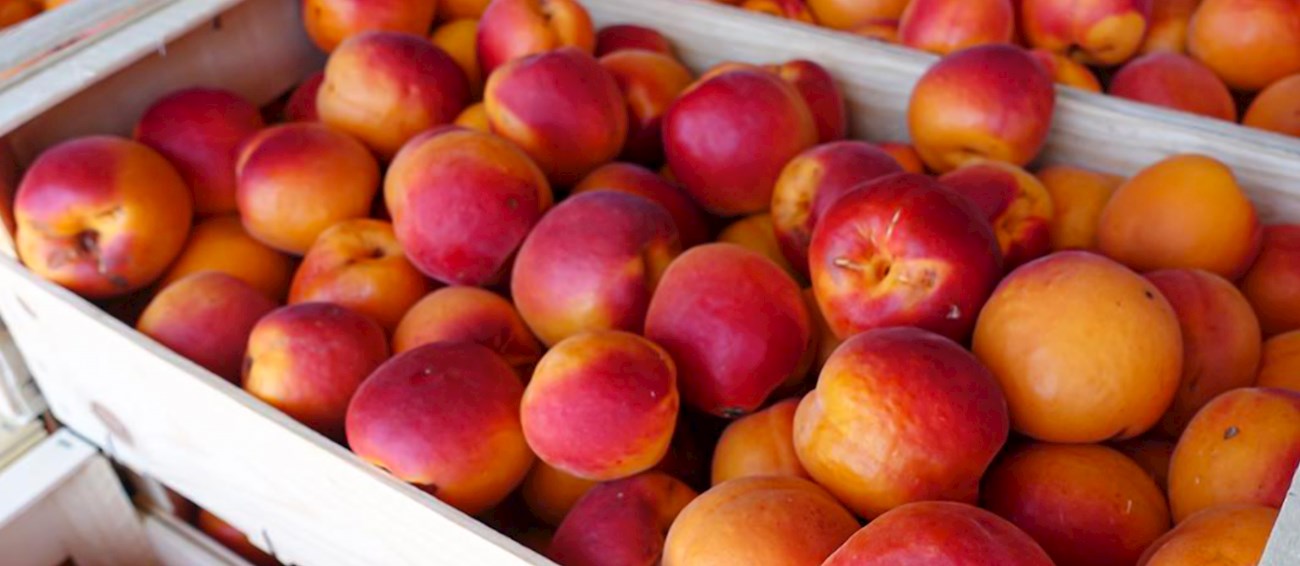Best Vaucluse Fruits (types and products) Types
Muscat du Ventoux is a table grape of the Muscat de Hambourg variety with an intense and delicate muscat scent. The grapes are large and have a strong deep blue, almost black color without any irregularities on the skin. They are grown in the Vaucluse region in France and have been since the turn of the century, and the region's favorable climate and geological position provide the delicate flavors to the grapes.
All the grapes are hand-picked to ensure the best possible quality control. They are naturally sweet and juicy, rich in iron, magnesium and calcium and usually eaten at the end of the meal as a dessert or made into fine wines.
Abricot des Baronnies is a variety of fresh apricot cultivated in the foothills of the Alps, notable for its particularly sweet flavor. This fruit can be found in various colors, including orange, bicolor, red, or white. Its cultivation area is primarily in the southeast of France, especially in the south of the Drôme department, with some areas extending into the neighboring departments of Vaucluse and Hautes-Alpes.
The geographical area designated for the cultivation of Abricot des Baronnies spans 87 municipalities and was defined based on historical, geographical, and geomorphological criteria characteristic of the Baronnies territory, as well as the historical development zone of apricot production in the Baronnies.
Cerise des coteaux du Ventoux is a French red table cherry originating from the foothills of Mont Ventoux in the department of Vaucluse. The cherries are obtained from cultivars of Prunus avium L., Prunus cerasus L., or their hybrids. The minimum size of the cherries is 24 mm and when picked (always by hand), they should be of optimal ripeness, which is determined on the basis of three color ranges and a minimum sugar content.
In the production area, the cherries are a traditional crop that has been cultivated for hundreds of years. The first written references to the cherries from this area date back to the 17th century. Nowadays, the cherries can be found on the market from May to mid-July.
TasteAtlas food rankings are based on the ratings of the TasteAtlas audience, with a series of mechanisms that recognize real users and that ignore bot, nationalist or local patriotic ratings, and give additional value to the ratings of users that the system recognizes as knowledgeable. TasteAtlas Rankings should not be seen as the final global conclusion about food. Their purpose is to promote excellent local foods, instill pride in traditional dishes, and arouse curiosity about dishes you haven’t tried.




